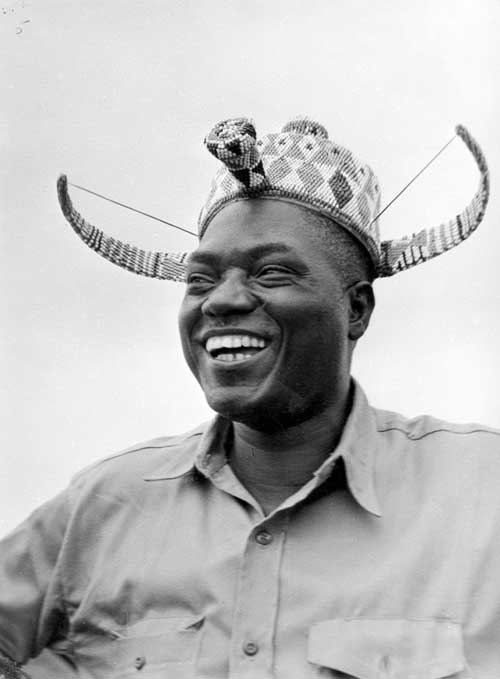"Congo Picture Book"
The camera was an essential tool for Mennonite missionary enterprise in Africa, as well as on other continents. Photographs enabled missionaries to share information with supporting families and congregations back home. Through slide shows, photographs in church periodicals, and photo albums, North Americans learned about people and places on "the mission field." (Strangely, the missionary family in Kingsolver's Poisonwood Bible, although overloaded with consumer comforts from home, seems not to have had a camera. They remembered their misbegotten mission work without the aid of photographs.)
The "Congo Picture Book," from the collection of photographs in the Mennonite Library and Archives at Bethel College, was originally created as a kind of photo album. The original photos are mostly prints about nine by eleven inches in size. The photographer is unknown. Perhaps someone among our readers can help fill in some details. [See note in Table of Contents of the June 2001 issue.]
The photographs are not well dated but seem to come from around 1960. They show people and situations from the work of Congo Inland Mission, later Africa Inter-Mennonite Mission. The photo captions, written for a North American audience, betray a paternalistic style of missions publicity typical of an earlier generation. Note in the photo of the gymnastics group, for example, the reference to a "curriculum which teaches them to obey instructions." The Africans are pictured as people of great dignity, but the viewpoint implies outside ownership. This is "our work," belonging to the mission and to the supporting churches in North America.
The captions in the "Congo Picture Book" are quoted directly. Some photos are missing from the set, but the captions are all included here, and the gaps are noted in the series of links.
[photo 1 missing; no caption]

2
KABANGA THOMAS MODELS A VILLAGE CHIEF'S HAT
Thomas is the pastor of the church in the large Forminiere Diamond Camp across the Kasai River from our station at Tshikapa.
 March 2001
vol. 56 no. 1
Back to Table of Contents
March 2001
vol. 56 no. 1
Back to Table of Contents